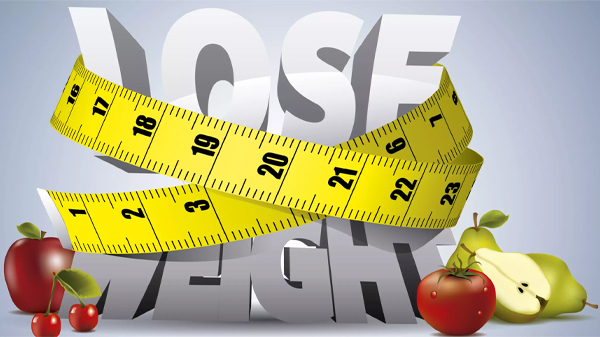How Does Fat Leave the Body When We Lose Weight?

- Update Time : Wednesday, 24 January, 2024, 06:26 pm
- 109 Time View

Online Desk: Losing weight is a common goal for many, but have you ever wondered where the fat goes when you shed those kgs? This article will unveil the secrets of fat-burning and discover effective weight-loss strategies. Join the journey to a healthier you, where every lost kg tells a tale of determination and transformation.
What is Body Fat?
Body fat, often unappreciated, serves a crucial role as a reservoir of stored energy, particularly during extended periods without food access. Body fat refers to the adipose tissue present in the human body, serving as a crucial energy reserve and playing various physiological roles.
Comprising triglycerides, body fat is stored in adipocytes, or fat cells, distributed throughout the body. While essential for insulation, organ protection, and hormone regulation, an excess of body fat can lead to health issues.
The growth of fat cells in size and number is determined soon after birth and during adolescence. It remains relatively stable in adulthood unless disrupted by long-term excess calorie consumption. Weight loss can shrink fat cells but not their number.
Body fat is typically categorised into two types: essential fat and storage fat. Essential fat is vital for normal physiological functioning, found in organs, nerves, and cell membranes. Storage fat, on the other hand, accumulates beneath the skin (subcutaneous fat) and around organs (visceral fat), providing a reserve for energy needs.
Measuring body fat percentage is crucial for assessing overall health and fitness. Various methods, such as skinfold calipers, bioelectrical impedance, and dual-energy X-ray absorptiometry (DEXA), help estimate body fat content. Healthy body fat percentages differ based on age, sex, and fitness levels, with excessive body fat linked to increased risk of conditions like obesity, cardiovascular diseases, and diabetes.
Maintaining a balance between essential and storage fat is essential for overall well-being. It apexes the importance of a healthy lifestyle encompassing proper nutrition, regular exercise, and holistic health management.
How Fat is Burned?
The process of fat burning is intricate and revolves around the body’s metabolism, a sequence of chemical reactions transforming food into energy. Upon ingestion, the body breaks down food into molecules suitable for immediate energy consumption or reserves for future needs. Fat, categorised as stored energy, becomes a resource the body can tap into when required.
What Happens to Body Fat When You Diet?
When you diet, you eat fewer calories than you burn. This creates a deficit in calories, signifying that your body is expending more energy than it is receiving. To make up for the calorie deficit, the body initiates a process known as lipolysis to meet its energy needs by breaking down stored fat.
The process of lipolysis is initiated, where enzymes break down triglycerides into glycerol and fatty acids. Glycerol is then converted into glucose through gluconeogenesis, providing an energy source for the body. Fatty acids are released into the bloodstream and transported to cells, where they undergo beta-oxidation. This metabolic pathway breaks down fatty acids into acetyl-CoA, entering the Krebs cycle to produce energy.
The combination of a caloric deficit and increased energy expenditure during the metabolic processes results in weight loss, with a significant portion coming from the breakdown of stored body fat.
Lipolysis is intricately regulated by various hormones, including insulin, glucagon, and epinephrine. While insulin promotes fat storage, glucagon and epinephrine act to stimulate fat breakdown. When following a diet, insulin levels decrease, and there is an increase in glucagon and epinephrine levels.
This hormonal shift favours an augmentation of lipolysis, thereby fostering fat burning and contributing to the overall weight loss process. Understanding these metabolic intricacies provides insights into the physiological mechanisms underlying effective weight management during dietary interventions.
What Happens to Body Fat When You Exercise?
Exercise plays a pivotal role in burning body fat by enhancing metabolic rate and promoting energy expenditure. During physical activity, muscles require additional energy, triggering the body to utilise stored fat for fuel. Aerobic exercises, such as running, swimming, biking or cycling, stimulate the oxidation of fatty acids as a primary energy source.
The heightened demand for oxygen during aerobic exercise triggers an increase in metabolism, prompting the breakdown of triglycerides through lipolysis. This process releases fatty acids that are then transported to active muscles, where they undergo beta-oxidation, contributing to ATP (adenosine triphosphate) production.
Anaerobic exercise (resistance training, or strength training), such as weightlifting also contributes to fat burning by building lean muscle mass. Muscles have a higher metabolic rate than fat tissue, leading to an elevated resting metabolic rate. This means that even at rest, individuals with more muscle burn more calories, including those derived from stored fat.
The type of exercise you do can affect how much fat you burn. Aerobic exercise is the most effective type of exercise for burning fat. Anaerobic exercise can also help burn fat, but it is not as effective as aerobic exercise.
The intensity of your workout also affects how much fat you burn. Higher-intensity workouts burn more calories than lower-intensity workouts. However, it is important to start slowly and gradually increase the intensity of your workouts to avoid injury.
In essence, both diet and exercise play integral roles in the body’s fat-burning processes, with each contributing to weight management and overall health.
Verdict
Beginning a weight loss journey involves more than shedding pounds. Understanding how fat leaves the body when we lose weight empowers individuals on their wellness journey. By combining effective dieting strategies, purposeful exercise routines, and mindful lifestyle changes, achieving sustainable weight loss becomes a tangible and rewarding goal.
















